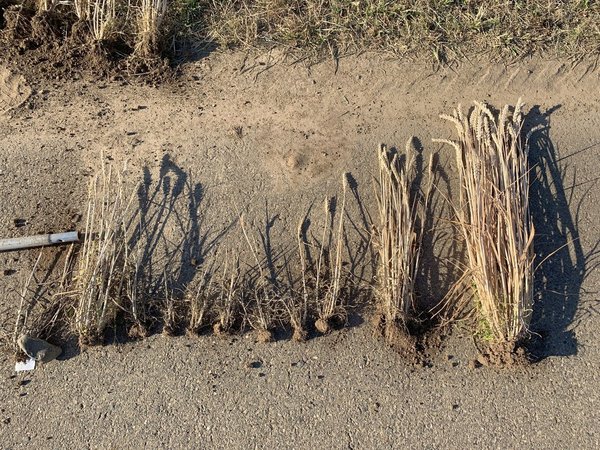- Share this article
- Subscribe to our newsletter
Initial resistance against wheat dwarf virus discovered
When the leafhopper Psammotettix alienus pierces a wheat plant to suck plant sap, the consequences may be fatal. The leafhopper can transmit the wheat dwarf virus (WDV) through its saliva. Depending on the plant’s age at the time of infection, yield can drop by at least 30 per cent, and even total failure is possible.
Researchers of the Julius Kühn Institute for Resistance Research and Stress Tolerance (JKI) in Quedlinburg/Germany have now tested 500 wheat accessions – including cultivars, gene bank accessions and wild species – for their resistance to WDV. The wild species proved to be similarly susceptible to the virus as modern cultivars, suggesting that breeding has not caused a loss of resistance genes. More than half of the accessions tested died because of the infection.
Two Hungarian cultivars described as resistant showed only low quantitative resistance to the virus disease, with infection rates of 21.5 and 34.5 per cent. However, the researchers discovered almost complete resistance in the Russian winter wheat cultivar "Fisht", with an average of 5.7 per cent of infected plants.
The results of the study were published in the open-access journal "Frontiers in Plant Science" in April.
A GWAS revealed even more. "For the first time, we succeeded in identifying QTL associated with low losses in yield after virus infection," explains Anne-Kathrin Pfrieme, who is writing her doctoral thesis on this topic at the JKI. QTL are sections of the genome associated with quantitative traits, such as height, weight or even disease resistance, the scientist explains.
According to the scientists at the JKI these gradually measurable traits are the result of interaction between different genes. Of the 35 QTL initially identified for WDV resistance, further tests showed that 14 QTL were consistently associated with low yield losses after WDV infection.
"With the help of genetic markers, these QTL could be crossed into elite wheat lines and are thus a promising tool for generating resistant varieties in the future," says Pfrieme, describing the significance of her research results for agricultural practice.
Wheat dwarf virus as yet uncontrollable
Various breeding companies which were involved in the research together with the German Society for the Promotion of Plant Innovation (Gesellschaft zur Förderung von Pflanzeninnovation, GFPi) have shown considerable interest – especially since the virus cannot be controlled and no insecticide is approved in the European Union to control the transmitting leafhopper.
Background
The wheat dwarf virus has been spreading throughout Europe since the middle of the 20th century. Besides wheat, it affects barley and other cereals. Today, it is one of the most important cereal diseases in Europe, Asia and Africa. It is transmitted in autumn by adult leafhoppers (Psammotettix alienus). Secondary infection by nymphs of P. alienus is possible in spring. Infection is manifested by striped colouring of the leaves, chlorosis, a reduced number of ears, reduced winter hardiness and the death of plants in early stages of development.
As viruses cannot be controlled with pesticides and, in some cases, environmentally friendly pesticides against the vectors are lacking, the breeding of resistant varieties is becoming increasingly important.
(JKI/wi)
Reference





Add a comment
Be the First to Comment